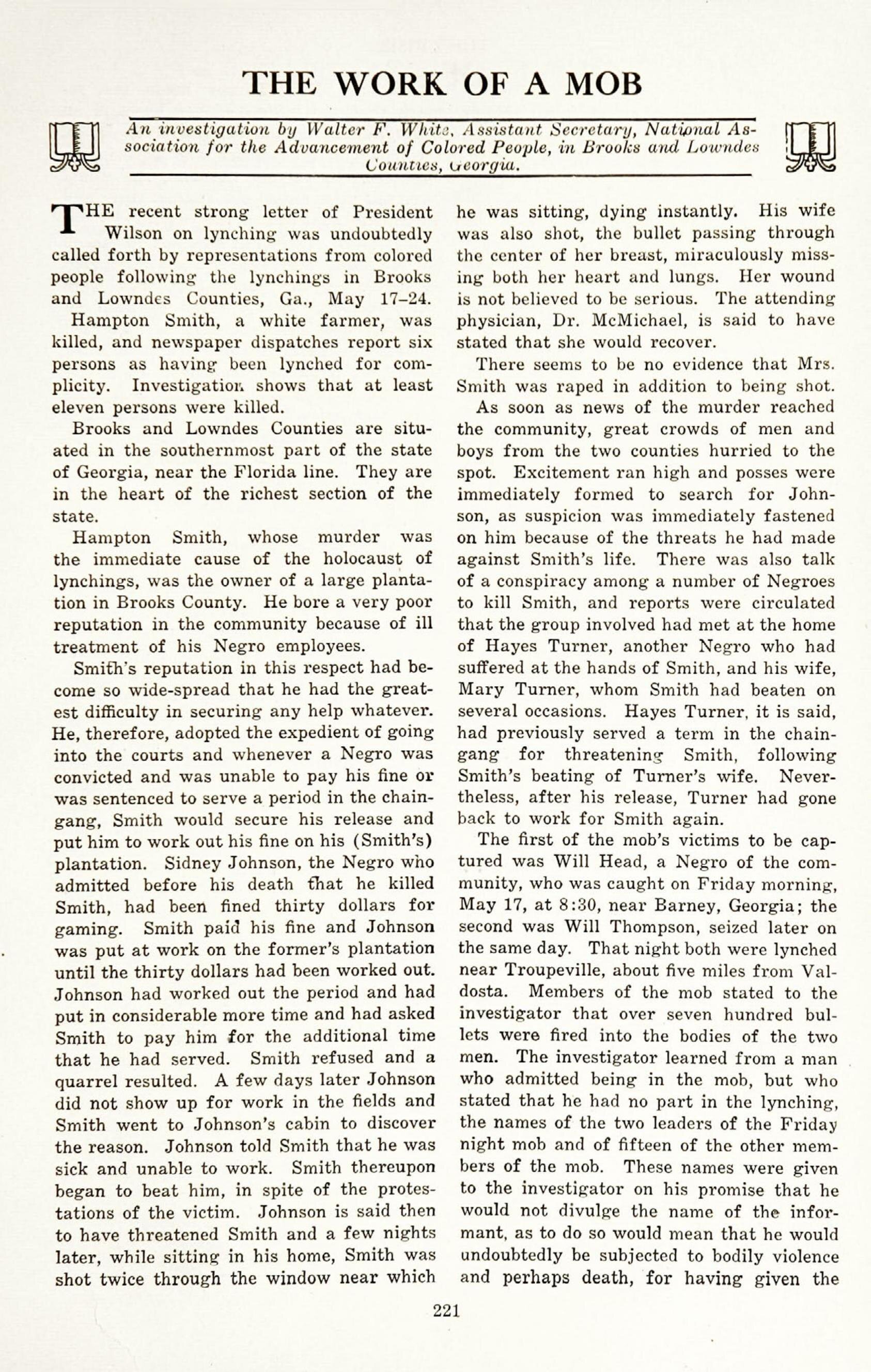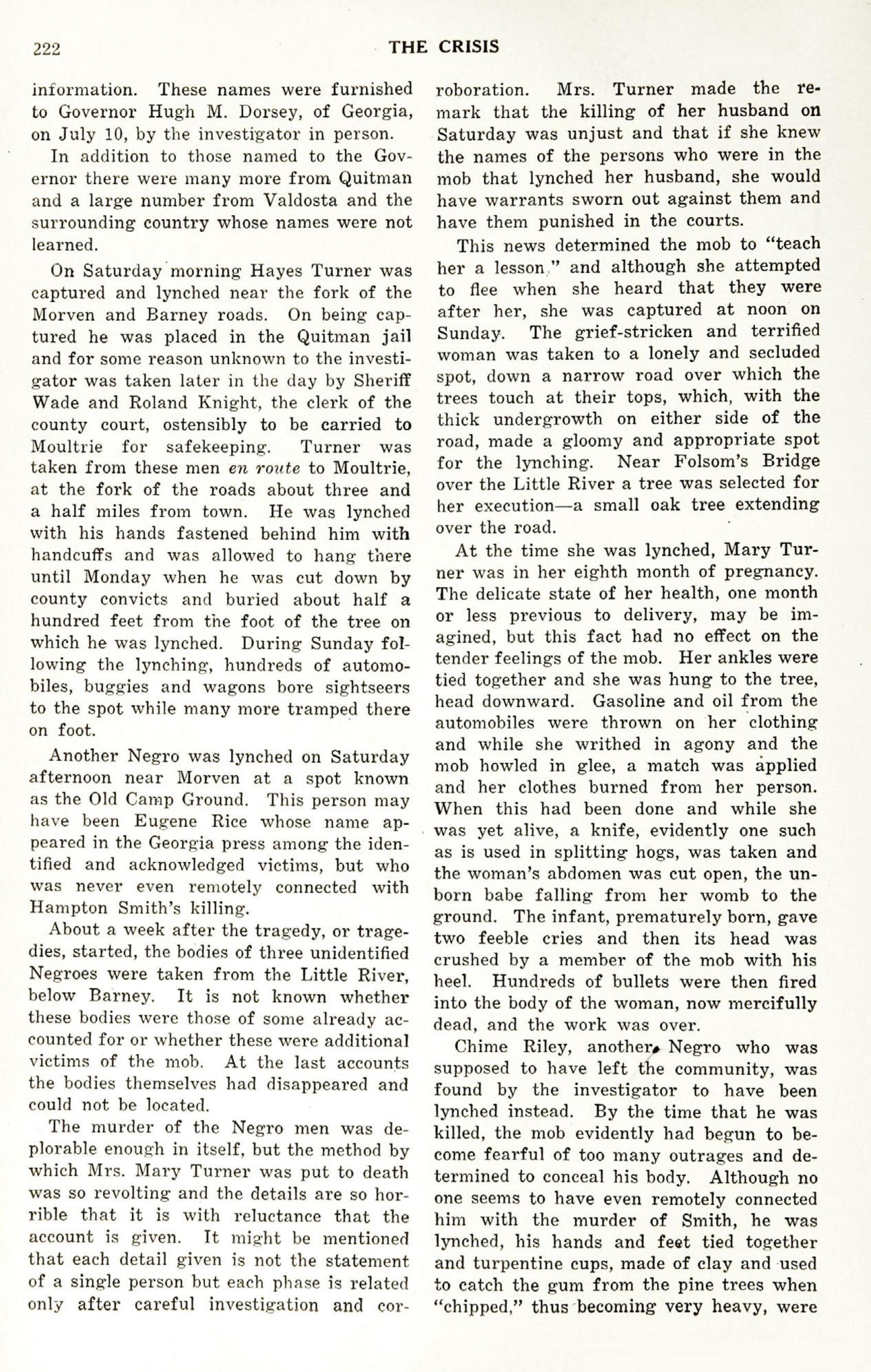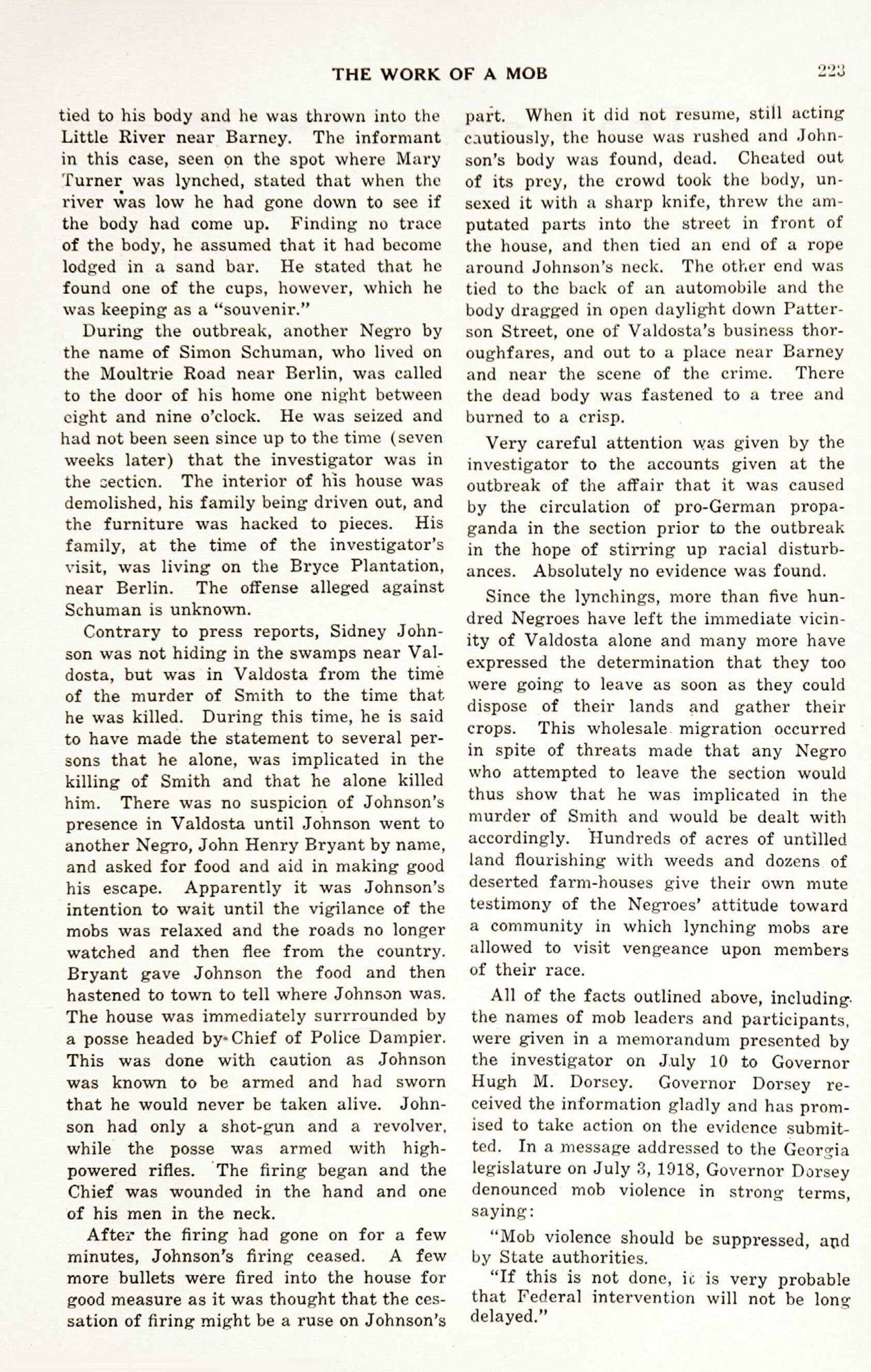Meta Vaux Warrick Fuller
HISTORY HIGHLIGHT
Meta Vaux Warrick Fuller (1877-1968) was a sculptor, painter, theater designer, and poet. As a black female artist, she boldly explored the struggles and triumphs of the African American experience. Her visionary works of art set her at the forefront of the Harlem Renaissance.
Early Life in Philadelphia, Pennsylvania
Finding Success in Paris, France
Meta Warrick Fuller: Trailblazing African American Artist
First African-American Woman to Receive a Federal Art Commission
Balancing Expectations and Creative Passions
Sculpture, Poetry and Theater
Dartmouth Art Museum Collection
Early Life in Philadelphia, Pennsylvania
Meta Vaux Warrick Fuller was born in Philadelphia in 1877. Her mother, Emma Jones Warrick, was a beautician and wig maker, and her father, William H. Warrick, was a barber. The family-owned their own businesses and were also involved in real estate and catering.
Emma Warrick’s clients were upper-class white women. Following a suggestion, Emma Warrick named her daughter after customer, Meta Vaux, the daughter of Senator Richard Vaux. (Meta is pronounced "mee-tah", according to Fuller's grandson, Dr. John L. Fuller, Sr.)
Because of her parent’s success and middle-class status, Fuller received educational and cultural opportunities not open to many blacks during the era.
The youngest of three children, Fuller’s imagination and creativity were influenced by her family. Her brother and grandfather regaled Fuller with horror stories. Her sister supplied her with clay and other materials that Fuller used to create artwork. And her father took her to art exhibitions, encouraging Fuller’s love of art.
Fuller studied art while attending the Girl’s High School in Philadelphia, a black segregated public school. In 1893, she won a scholarship to the Pennsylvania Museum and School of Industrial Art (now Pennsylvania College of Art) where she became interested in sculpture.
In 1898, she graduated with a diploma and teacher’s certificate and sailed to Europe in 1899 for postgraduate studies in art.
Finding Success in Paris, France
Before arriving in Paris, Meta Warrick Fuller had contacted the American Girl’s Club and received approval to stay there during her time in Paris, but when she arrived, she was turned away by the director and told that there were girls there from the south who would object to Meta’s color.
Though disheartened by the racism she thought she’d left behind in America, Fuller was able to find lodgings elsewhere. The director of the Club out of obligation introduced her to potential art teachers. The introductions allowed her to meet sculptors, Raphael Collin and Jean-Antonin Carles. During the next year, Fuller studied with them both and was able to hone her skills in drawing and anatomy.
Warrick Fuller was studying in Paris when the World's Fair opened in 1900.
World fairs were places where African American’s felt they could set the record straight about their education and contributions to literature, the arts, and music.
The organizers of the American Negro Exhibit at the world’s fair included W.E.B. DuBois, one of the founders of the NAACP. He invited Fuller to create displays celebrating black history. They assembled dioramas that were scenes of black life with statistical information to prove the advancement of the black race.
In her final year in Paris, Fuller visited Auguste Rodin, sculptor of “The Thinker,” taking with her a few of her small sculptors for him to criticize.
After studying her work on a piece called “Man Eating His Heart,” sometimes called “Secret Sorrow,” Rodin complimented her for being a sculptor with a sense of form in her fingers.
“Man Eating His Heart”
Receiving praise from Rodin propelled Meta into the attention of the Paris art world and her works began to receive more recognition.
Her piece “The Wretched” received wide acclaim and she grew well-known in Paris, exhibiting her pieces in gallery group showings and a one-woman exhibition.
Meta Warrick Fuller: Trailblazing African American Artist | Unladylike2020 | American Masters | PBS
The first African-American woman to receive a U.S. government art commission
Meta returned to Philadelphia in 1903. After the success she found in Paris, the reception of her work in America was a disappointment. Besides dealing with gender norms of the day, there was also racism. She was unable to sell her work and told her work was “domestic.”
In 1907 she became the first African-American woman to receive a U.S. government art commission when she was asked to create artwork for the Jamestown Tercentennial Exposition, a world fair marking the three hundredth anniversary of the founding of Jamestown and the Virginia colony.
She depicted scenes beginning with the arrival of slaves in 1619 Virginia to others that depicted the lives of black people through the years. Including slaves at work in a cotton field, gathering of blacks at the first African Methodist Episcopal Church, a black businessman, and ending with a Howard University commencement address given by Frederick Douglas.
Meta’s works were ground-breaking at depicting the African-American experience.
Meta’s work was not in demand in America and she was not able to gain independence from selling her work. She was financially dependent upon her family and their expectations. And she had been raised during a time when women were expected to marry and not work outside the home.
Balancing Expectations and Creative Passions
In 1909, Meta Faux Warrick married Dr. Solomon Carter Fuller, a neurologist at Massachusetts Hospital. Of note, Dr. Carter is acknowledged as the first person of African descent to practice psychiatry in the United States.
The two settled in Framingham, Massachusetts, and began raising a family.
Meta and husband, Solomon
Meta worked hard at balancing her home life and the desire to create and express herself through her artwork.
Though expected by some to give up her career after marriage, Meta found ways of continuing her artistry such as securing property in Framingham for an art studio and setting up a studio in her home attic.
She and Dr. Fuller had three sons: Solomon Jr., William Thomas, and Perry. Some months after her first son, Solomon Jr., was born, there was a fire at the Philadelphia warehouse where Meta had stored her work and tools after her arrival from Europe and before she was married. She lost most of her artwork, sixteen years’ worth, including work she had completed while in Paris.
Devastated by the fire, Meta set aside her work for several years.
In 1913, W.E.B, Du Bois asked Meta to contribute to the New York celebration of the Emancipation Proclamation's 50th anniversary of the abolishment of slavery. She created a piece called “Emancipation Group.” They are semi-nude, and they are not being liberated by Abraham Lincoln or a former owner. They're self-liberating.
“Emancipation Group” by Meta Warrick Fuller.
Meta Warrick Fuller’s description of Emancipation Group:
“I represented the race by a male and a female figure standing under a tree, the branches of which are fingers of Fate grasping at them to draw them back into the fateful clutches of hatred. [The third figure depicted] humanity weeping over her suddenly freed children who, beneath the gnarled fingers of Fate, step forth into the world unafraid." - Meta Warrick Fuller
By 1944, as her husband’s declining health led to his loss of eyesight, Meta took care of him full-time until he passed away in 1953 at age 81. Now in her 70s, Meta returned to creating artwork and writing poetry.
Below are examples and discussions of some of her works in sculpture, poetry and theater throughout her lifetime.
Sculpture, Poetry and Theater
In Memory of Mary Turner: As a Silent Protest Against Mob Violence, 1919
In Memory of Mary Turner: As a Silent Protest Against Mob Violence, 1919
Mary Turner was a black woman and 8 months pregnant when she was lynched by a white mob. The details of her murder are very horrific. Her offense: She spoke out against the lynching of her innocent husband.
Because she dared to publicly denounce his murder, a mob of hundreds hung her upside down from a tree and killed her and her unborn child.
The sculpture is symbolic of what happened to Mary Turner that day in Lowndes County, Georgia in 1918.
A woman cradling an infant in her arms
Leaning away from grasping hands
Flames engulfing her from below
The Mary Turner sculpture shows Meta Warrick Fuller’s social consciousness and is considered one of the first works of art to tackle the subject of lynching.
The Talking Skull, 1939
The Talking Skull, 1939
Meta Warrick Fuller was deeply influenced by the ghost stories told to her by her brother and grandfather when she was growing up. She once commented that she saw her work as being “of the soul,” that she considered not just the outside figure of the subject, but looked for the deeper meaning.
One of the reasons she was called a “sculptor of horror’ was because she depicted pain and sorrow and the deepest, darkest emotions that people can have.
Talking Skull is one of Meta’s most celebrated sculptors. It was inspired by an African fold tale and depicts an African man studying a skull, communicating his thoughts about the mysteries of life and death.
"The Talking Skull," was inspired by a folk tale in which a skull warned a young man that "Tongue brought me here and if you are not careful, Tongue will bring you here."
Some interpretations propose it denotes the desire for communication between the living and the dead or the African American longing for connection to an African ancestral past.
This sculpture, along with several others, is part of the Museum of African American History’s permanent collection.
Ethiopia Awakening, 1914
Ethiopia (Awakening), 1914
Warrick Fuller sculpted her most well-known public work called Ethiopia Awakening for a 1921 exhibit in New York at the request of W.E.B. Du Bois.
The sculpture depicts an African woman wearing an ancient Egyptian queen’s headdress. Her lower half wrapped like a mummy. Gradually unwinding the bandage, she’s ridding herself of her mummied past and looking out, expectant but unafraid.
It is a graceful and uplifting statue that represents the awakening of black people; ancient black Egyptian coming back to life; and a triumphant message of hope. It celebrates Africans and their connection to African Americans.
Ethiopia Awakening anticipated the Harlem Renaissance’s style and essence and signified the evolution of a new way of black thinking while affirming the cultural contributions of African Americans to the United States.
Departure
By Meta Vaux Warrick Fuller
The time is near (reluctance laid aside)
I see the barque afloat upon the ebbing tide
While on the shores my friends and loved ones stand.
I wave to them a cheerful parting hand,
Then take my place with Charon at the helm,
And turn and wave again to them.
Oh, may the voyage not be arduous nor long,
But echoing with chant and joyful song,
May I behold with reverence and grace,
The wondrous vision of the Master's face.
Departure poem is included in Now is Your Time! The African-American Struggle for Freedom, a 1991 collection by Walter Dean Myers. Available from Amazon.
Meta Vaux Warrick Fuller’s Theater activities
In 1918, Warrick Fuller joined theater companies in Boston. She worked both with African American and white theater companies.
Warrick Fuller was active in the theater, notably in stage design and lighting. She produced what were called “living pictures,” using actors to recreate artistic masterpieces. She also designed costumes. Her talent also extended to directing and acting.
Danforth Art Museum Collection
A re-creation of the attic studio in Meta Vaux Warrick Fuller’s home in Framingham, Massachusetts
The Meta Vaux Warrick Fuller Special Collection is on permanent display at the Danforth Art Museum in Framingham, Massachusetts, and consists of her process pieces and other items that illustrate aspects of Fuller’s sculptor work.
The entire collection can be viewed at the museum along with a re-creation of Fuller’s first art studio in the attic of her home in Framingham.
As the museum literature explains, “The collection spans seventy years of creative output from Fuller’s early works in Paris, to her role as a precursor to and in the Harlem Renaissance, to her late works celebrating members of the African-American intelligentsia.”
Danforth Art Museum is the caretaker for the largest Fuller collection in existence. Visit online to see some of Meta Fuller’s Collection and to find visiting hours and admission information. << CLICK HERE >>
Throughout the years, Meta Vaux Warrick Fuller has become an example to other sculptors. She was an accomplished, multi-talented artist who made her mark on the world.
When she chose her subject matter, she was influenced by the songs of African Americans and by African folk tales. They inspired her and gave her insight into the joys and sadness of the human condition.
TO SEE MORE OF WARRICK FULLER’S WORK <<CLICK HERE>>
Warrick Fuller was considered a trailblazer of the Harlem Renaissance, “an artistic and intellectual awakening among African Americans in the 1920s.” She introduced America to depictions of the African and African American experience that exposed the tragedies but also celebrated the achievements.
She said that her work was “of the soul, rather than the figure, and sometimes the figure must be very crude in order to carry the full strength of the spiritual meaning.”
Her last exhibit was in 1961 in Washington, D.C. at Howard University. Meta Vaux Warrick Fuller died on March 18, 1968, at age 90.<<CLICK HERE>>
Learn more
If you would like to learn more about selected topics in this article, see the information below for further study and exploration.
(1) White, Walter F (September 1918). "The work of a mob". The Crisis. 16 (5). pp. 221–223.



(2) Meta Fuller’s poem titled Departure.
“Departure,” poem, is included in Now is Your Time! The African-American Struggle for Freedom, a 1991 collection by Walter Dean Myers.
(3) Mary Turner and the Memory of Lynching Paperback – August 1, 2011, by Julie Buckner Armstrong.
(4) America’s first memorial to its 4,400 lynching victims opened April 26, 2018, in Montgomery, Alabama. The National Memorial for Peace and Justice includes 800 monuments, each representing a county in the United States where a lynching took place. Each monument lists the names of the people killed in that county.
TO VISIT THE MEMORIAL ONLINE <<CLICK HERE>>
Inside the Memorial to Victims of Lynching (Video)
(5) Visit the following website to learn more about Mary Turner:
(6) Learn more about the Harlem Renassaince - An Archive for Virtual Harlem
references
Davidson, Benjamin; Biddle, Pippa (September/October 2020). “The Sculpture of Meta Vaux Warrick Fuller.” The Magazine Antiques. 34-40.
Perkins, Kathy A. (Spring 1990). "The Genius of Meta Warrick Fuller". Black American Literature Forum. 24 (1): 65–72. doi:10.2307/2904066. JSTOR 2904066.
Hoover, Velma J. “META VAUX WARRICK FULLER: HER LIFE AND HER ART.” Negro History Bulletin, vol. 40, no. 2, 1977, pp. 678–681. JSTOR, www.jstor.org/stable/44176711. Accessed 2 Mar. 2021.
Artist Stories: Meta Vaux Warrick Fuller
https://milled.com/artnet/artist-stories-meta-vaux-warrick-fuller-PM4j4iTZAzIxpxD2
“Meta Warrick Fuller” (https://unladylike2020.com/profile/meta-warrick-fuller/)Unladylike2020.
“Meta Warrick Fuller: Sculptor” Framingham Biographies (https://biographies.framinghamhistory.org/meta-warrick-fuller/)
“Meta Vaux Warrick Fuller” (https://en.wikipedia.org/wiki/Meta_Vaux_Warrick_Fuller)











